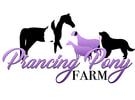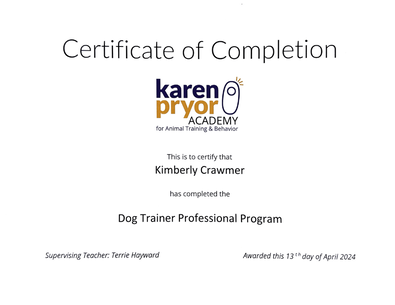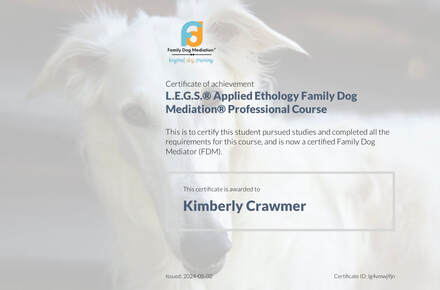Milking Nigerian Dwarfs Versus Mini Nubians
People often ask what the differences are between milk production in Nigerian Dwarfs versus Mini Nubians, as well as the difference in the actual milking process of each breed. I'm no expert but I can share my personal experiences, as well as what I've heard from other breeders.
First of all, there's more to it than just breed. There's the age of the doe and what freshening she's on. Does always produce less their first time freshening than they will in subsequent lactations. They produce more each year up to a certain age, then level out and eventually start dropping a bit. This is different with individual does.
Also, how many kids she has plays into it. Does with larger litters produce more milk, especially if they feed their own kids, versus the kids being bottle fed. It makes sense that having kids nursing all day long is naturally going to stimulate the doe to produce more milk than the doe being milked once or twice a day. This is true in humans and any mammal. And this is my experience, as my does with larger litters always produce more milk both while they are nursing kids and after. Does with triplet bucks are milking machines! I had a First Freshener F1 Mini Nubian doe (half Nigerian/ half Nubian), only 24" tall, who kidded quads her first litter and produced 7-8 lbs a day for the first 3 months of her lactation, confirmed by DHIA results. That's roughly a gallon a day! Her sister, with triplets and an inch shorter, produced 6 lbs a day. My big 27-28" doe with twin doelings produced less than both.
Then there is management and feeding. Does need to be properly fed, with plenty of high quality hay being the cornerstone of that feeding program. Free choice Alfalfa hay is best, but some grass or forage hay is good, too. Fiber makes milk and butterfat! High quality LOOSE minerals are a must, to balance out what's deficient in the hay. We us Craftsmin, from Grass Farmer Supply in Minnesota, but Sweetlix Caprine Magnum Milk is a good second choice.
Feed on the milk stand helps to keep the does happy and can help keep weight on a high producing doe, but we don't find that "Goat Chow" type feeds are necessary if you feed alfalfa hay and quality minerals, and we don't like the questionable ingredients in them. We feed either "Sweet Date Feed" by Palm Silage, Inc, which is a soy and GMO free, high protein (16%) and fiber (25%) feed made of palm silage, dates, canola, wheat mids and rice bran. That's it. Or if we run out of that we feed simple oats, barley and/or alfalfa pellets, either together or mixed. But we prefer the SDF, because of the extra fiber and protein, and the goats adore it. We buy it by the pallet!
Production can drop off in extremely hot weather, so plenty of shade, fans in the barn and electrolytes helps. We use Sheep and Goat BluLite, from Premier 1 Supply and we put out several 5 gallon buckets daily for the does and kids during hot weather.
How often and consistently you milk will impact production.We choose to only milk once a day, so we get less milk, though for several months the kids are getting as much as we do or more, so, effectively, it's as if they are being milked twice a day, and it still helps to boost production. If all the kids are sold at weaning then we may milk twice a day until production evens out, to prevent mastitis, but eventually we get them on a once a day schedule. If you milk twice a day you'll get more milk, but not twice as much. More like 1/3 more. To us it's worth giving up the extra 1/3 to get more time in our day!
Then there's the genetic aspect. The does have to come from strong dairy lines, bred for good production and correct udders, to produce their best. If they are only being bred for pets or colors or to win show ribbons or make a fast buck then they might not produce as well as they should in the milk pail. So decide what your goals are before to buy your goat and make sure the breeder's goals are the same.
So what is "average" per breed? I've heard everything from a couple of cups to "almost a gallon" for Nigerians, but considering the ADGA "Breed Leaders" for Nigerians - the best of the best - produce roughly 4-5 lbs a day, or about a half gallon, I think it's safe to say those high end claims are an exaggeration. I think somewhere between 1- 2 quarts is average for a good producing doe, maybe a bit higher at peak, and that's been our experience with our does.
Well bred Mini Nubians from strong dairy lines, in my experience and from my research, produce more like 1/2 to one gallon a day, sometimes a bit more, sometimes less for FF does. I had 9 of my does on DHIA milk test for 2017 and most of them produced on average 4-8 lbs, and 8 of them were FF's. (We quit DHIA due to time constraints but I hope to try again later. It was a valuable learning experience. Just a LOT of work!) That's close to or as much as what most full sized Nubians produce so really, you're not giving up much, except a higher hay bill, by going with Mini Nubians instead of standards! We used to own standard Nubians and our Minis produce more than the one adult doe we had did, and they are half her size. She was a beast, in more ways than one! Which is why we now have Minis.
As far a butterfat content, Nigerians have the highest of all the dairy breeds, but standard Nubians are the second highest standard breed, so Mini Nubians are so close behind Nigerians in butterfat as to be negligible. They just produce more of it. And in my opinion, are usually easier to milk, at least by hand.
There are Nigerians out there with really nice sized teats, but most of the ones I've seen, so far, have tiny teats. I have really big hands for a woman, so it can be tiring for me to hand milk Nigerians, 2 or 3 fingers at a time! I much prefer the "whole hand" sized teats on my Mini Nubians, as well as the added height making it easier to see and reach under them. If you have small hands this may not be an issue, and you can always get a taller milk stand to reach better under the shorties! And if you machine milk it won't matter how big the teats are. My Simple Pulse machine with Top Flo Z Nigerian inflations does and awesome job of milking both my Nigerians and Mini Nubians. But if I'm hand milking I prefer the Mini Nubians.
But I love both breeds and don't plan to give either up at this time, so I will just work towards improving teat size and other things in my Nigerians! Really it just comes down to personal preference in choosing breeds. Each person has to decide for themselves what matters most: volume of milk, butterfat content, teat size, height, weight and general size of goat they want to handle daily, if they'll be hand or machine milking, how much space they have, how much milk they even need, the look they prefer (Because looks DO carry some weight. Who wants to milk an ugly goat?!), the personality of the goat and whatever else plays into it. It's not a matter of one breed being better than the other; it's a matter of what breed is right for you, and only you can decide that. Or you can do like me, and choose BOTH!
First of all, there's more to it than just breed. There's the age of the doe and what freshening she's on. Does always produce less their first time freshening than they will in subsequent lactations. They produce more each year up to a certain age, then level out and eventually start dropping a bit. This is different with individual does.
Also, how many kids she has plays into it. Does with larger litters produce more milk, especially if they feed their own kids, versus the kids being bottle fed. It makes sense that having kids nursing all day long is naturally going to stimulate the doe to produce more milk than the doe being milked once or twice a day. This is true in humans and any mammal. And this is my experience, as my does with larger litters always produce more milk both while they are nursing kids and after. Does with triplet bucks are milking machines! I had a First Freshener F1 Mini Nubian doe (half Nigerian/ half Nubian), only 24" tall, who kidded quads her first litter and produced 7-8 lbs a day for the first 3 months of her lactation, confirmed by DHIA results. That's roughly a gallon a day! Her sister, with triplets and an inch shorter, produced 6 lbs a day. My big 27-28" doe with twin doelings produced less than both.
Then there is management and feeding. Does need to be properly fed, with plenty of high quality hay being the cornerstone of that feeding program. Free choice Alfalfa hay is best, but some grass or forage hay is good, too. Fiber makes milk and butterfat! High quality LOOSE minerals are a must, to balance out what's deficient in the hay. We us Craftsmin, from Grass Farmer Supply in Minnesota, but Sweetlix Caprine Magnum Milk is a good second choice.
Feed on the milk stand helps to keep the does happy and can help keep weight on a high producing doe, but we don't find that "Goat Chow" type feeds are necessary if you feed alfalfa hay and quality minerals, and we don't like the questionable ingredients in them. We feed either "Sweet Date Feed" by Palm Silage, Inc, which is a soy and GMO free, high protein (16%) and fiber (25%) feed made of palm silage, dates, canola, wheat mids and rice bran. That's it. Or if we run out of that we feed simple oats, barley and/or alfalfa pellets, either together or mixed. But we prefer the SDF, because of the extra fiber and protein, and the goats adore it. We buy it by the pallet!
Production can drop off in extremely hot weather, so plenty of shade, fans in the barn and electrolytes helps. We use Sheep and Goat BluLite, from Premier 1 Supply and we put out several 5 gallon buckets daily for the does and kids during hot weather.
How often and consistently you milk will impact production.We choose to only milk once a day, so we get less milk, though for several months the kids are getting as much as we do or more, so, effectively, it's as if they are being milked twice a day, and it still helps to boost production. If all the kids are sold at weaning then we may milk twice a day until production evens out, to prevent mastitis, but eventually we get them on a once a day schedule. If you milk twice a day you'll get more milk, but not twice as much. More like 1/3 more. To us it's worth giving up the extra 1/3 to get more time in our day!
Then there's the genetic aspect. The does have to come from strong dairy lines, bred for good production and correct udders, to produce their best. If they are only being bred for pets or colors or to win show ribbons or make a fast buck then they might not produce as well as they should in the milk pail. So decide what your goals are before to buy your goat and make sure the breeder's goals are the same.
So what is "average" per breed? I've heard everything from a couple of cups to "almost a gallon" for Nigerians, but considering the ADGA "Breed Leaders" for Nigerians - the best of the best - produce roughly 4-5 lbs a day, or about a half gallon, I think it's safe to say those high end claims are an exaggeration. I think somewhere between 1- 2 quarts is average for a good producing doe, maybe a bit higher at peak, and that's been our experience with our does.
Well bred Mini Nubians from strong dairy lines, in my experience and from my research, produce more like 1/2 to one gallon a day, sometimes a bit more, sometimes less for FF does. I had 9 of my does on DHIA milk test for 2017 and most of them produced on average 4-8 lbs, and 8 of them were FF's. (We quit DHIA due to time constraints but I hope to try again later. It was a valuable learning experience. Just a LOT of work!) That's close to or as much as what most full sized Nubians produce so really, you're not giving up much, except a higher hay bill, by going with Mini Nubians instead of standards! We used to own standard Nubians and our Minis produce more than the one adult doe we had did, and they are half her size. She was a beast, in more ways than one! Which is why we now have Minis.
As far a butterfat content, Nigerians have the highest of all the dairy breeds, but standard Nubians are the second highest standard breed, so Mini Nubians are so close behind Nigerians in butterfat as to be negligible. They just produce more of it. And in my opinion, are usually easier to milk, at least by hand.
There are Nigerians out there with really nice sized teats, but most of the ones I've seen, so far, have tiny teats. I have really big hands for a woman, so it can be tiring for me to hand milk Nigerians, 2 or 3 fingers at a time! I much prefer the "whole hand" sized teats on my Mini Nubians, as well as the added height making it easier to see and reach under them. If you have small hands this may not be an issue, and you can always get a taller milk stand to reach better under the shorties! And if you machine milk it won't matter how big the teats are. My Simple Pulse machine with Top Flo Z Nigerian inflations does and awesome job of milking both my Nigerians and Mini Nubians. But if I'm hand milking I prefer the Mini Nubians.
But I love both breeds and don't plan to give either up at this time, so I will just work towards improving teat size and other things in my Nigerians! Really it just comes down to personal preference in choosing breeds. Each person has to decide for themselves what matters most: volume of milk, butterfat content, teat size, height, weight and general size of goat they want to handle daily, if they'll be hand or machine milking, how much space they have, how much milk they even need, the look they prefer (Because looks DO carry some weight. Who wants to milk an ugly goat?!), the personality of the goat and whatever else plays into it. It's not a matter of one breed being better than the other; it's a matter of what breed is right for you, and only you can decide that. Or you can do like me, and choose BOTH!





